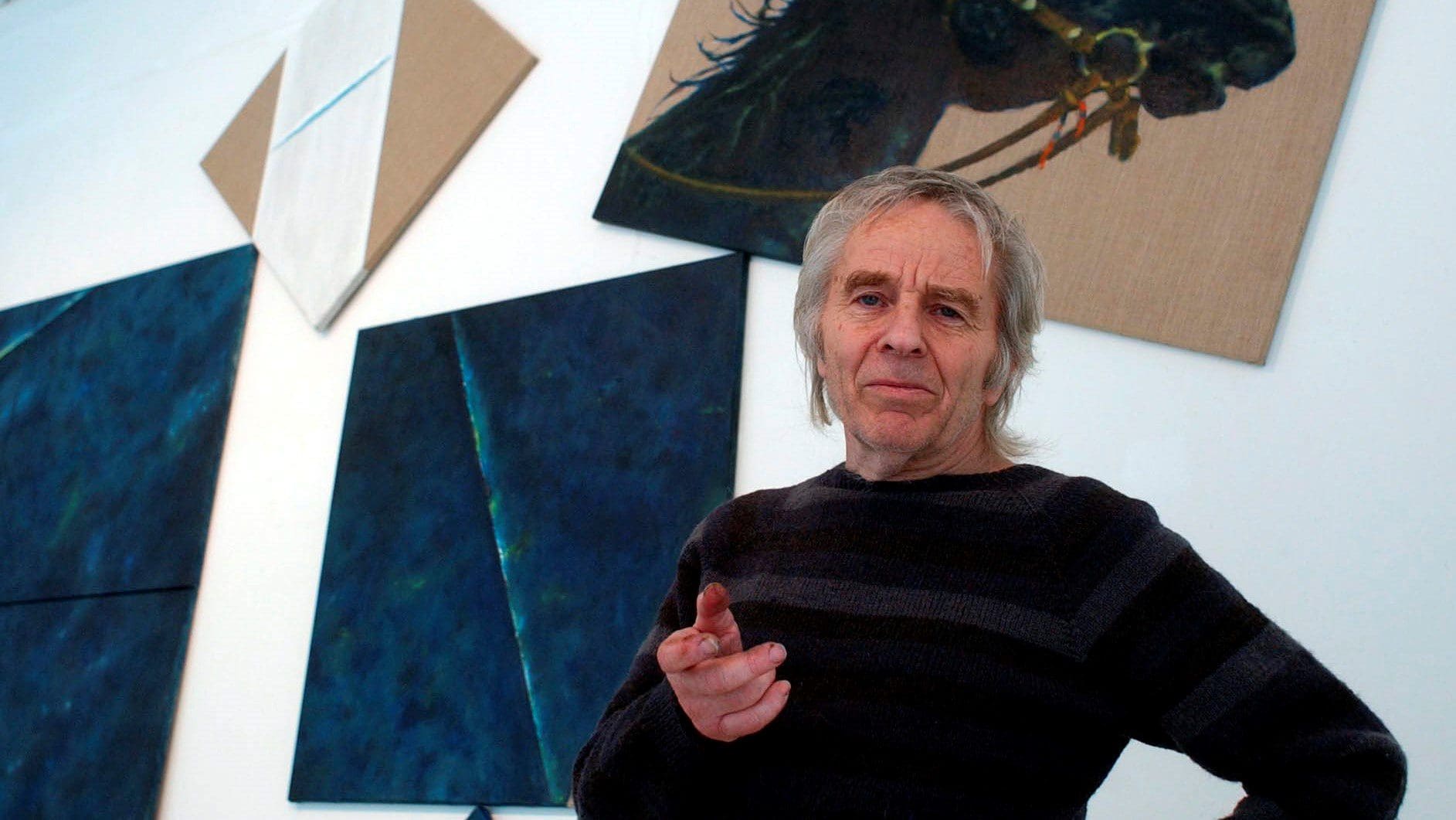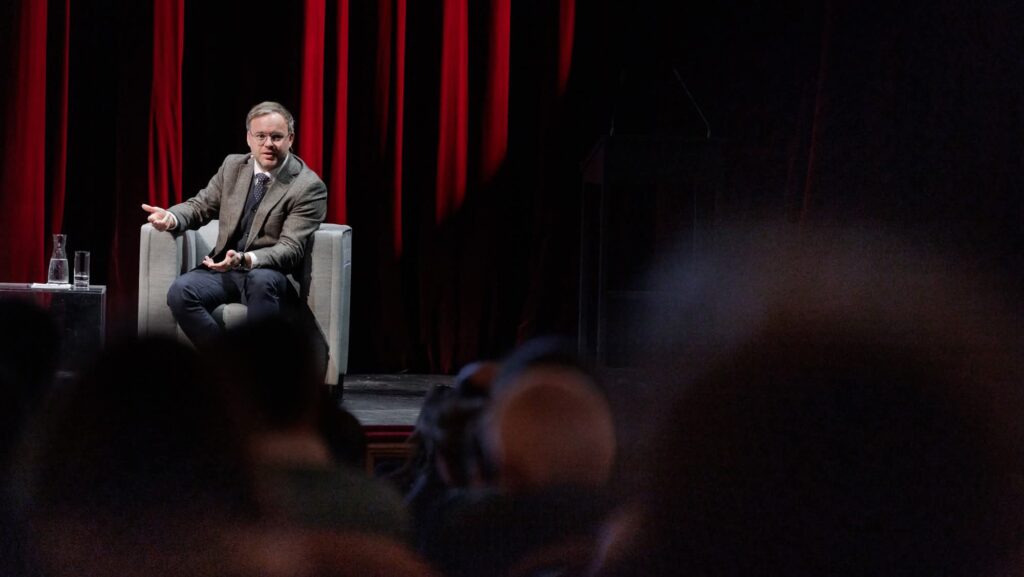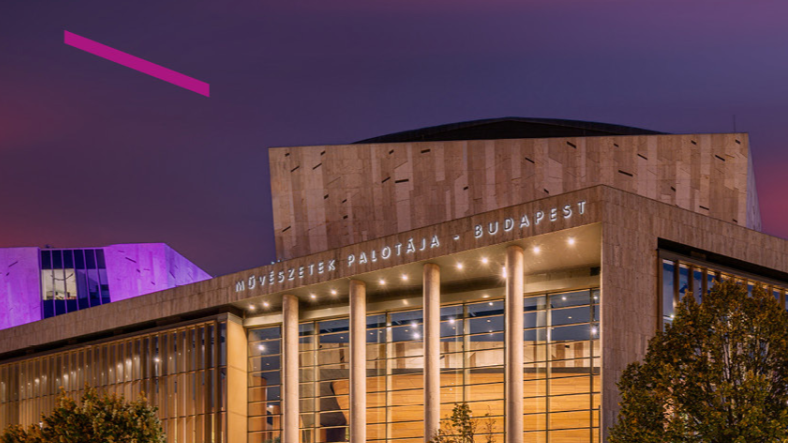As today, 16 August marks the anniversary of the premiere of the first Star Wars episode in Hungary, it is only appropriate to dive into the life and work of someone who is behind perhaps the most recognised and well-known Hungarian posters of the film.
In the realm of iconic motion picture posters, there are a few that have transcended their status as mere promotional materials to become enduring symbols of cinematic culture. Among these, the Star Wars poster by Hungarian artist Tibor Helényi holds a special place. Helényi’s distinctive artistic vision not only captured the essence of the beloved science fiction franchise
but also left an indelible mark on the world of film movie posters.
Tibor Helényi’s posters are considered among the most debated artistic and conceptual treasures by domestic and international Star Wars enthusiasts. In the 1980s, the studio of the Hungarian distributor of the film, MOKÉP, opted not to use official advertising materials from Lucasfilm and 20th Century Fox in cinemas. Instead, they employed Helényi’s surreal posters, which occasionally featured space monsters and distorted Darth Vaders that were never seen in the films.
Seeing his posters, many assumed that he had not seen the movies at all; however, the actual story behind the occasional monsters that did not appear in the films is more complex. When the studio needed material for the release, they invited both Helényi and his former classmate and good friend András Felvidéky. They were supposed to compete over which poster would be used, however, for them this was not a competition. They were invited for a press-showing of the films beforehand but later, drawing the posters, they thought it would be funny to include characters that were never actually part of the movies.
Them having fun together turned out to be an immensely positive influence. At an auction last year the film poster for Star Wars that was created in 1979 by Felvidéky for MOKÉP was sold for a surprisingly large sum. It started with a bidding price of 150,000 forints and eventually sold for 1.2 million.
Similarly, the poster for the Return of the Jedi designed by Helényi for MOKÉP
began with a bidding price of 300,000 Hungarian forints and steadily climbed to one million forints by the end of the evening.
Early Life and Artistic Journey
Tibor Helényi was born in 1946, in Budapest. From a young age, he displayed a keen interest in and aptitude for art. Between 1966 and 1971, he studied at the Hungarian University of Applied Arts, as a student of József Baska and Sándor Ernyei.
Helényi has been painting since 1966, and in 1974, he joined the Papp Group, which focused on poster graphics. From the mid-seventies, he became a member of the Perspektíva Group. His very first solo exhibition took place in 1978 under the title Barbarian Geometry, and the second one in 1982, titled Alter Ego.
From 1977 to 1992, he worked as a designer and editor at Interpress Magazine, alternately designing covers with György Kemény. Differently from his contemporaries, Helényi both painted film posters and designed covers. Helényi designed posters for significant film premieres in Hungary, such as the Star Wars trilogy, Ben-Hur, Rocky, Marathon Man, Close Encounters of the Third Kind, Alien, or the last film poster he designed for the 1989 release, RoboCop.
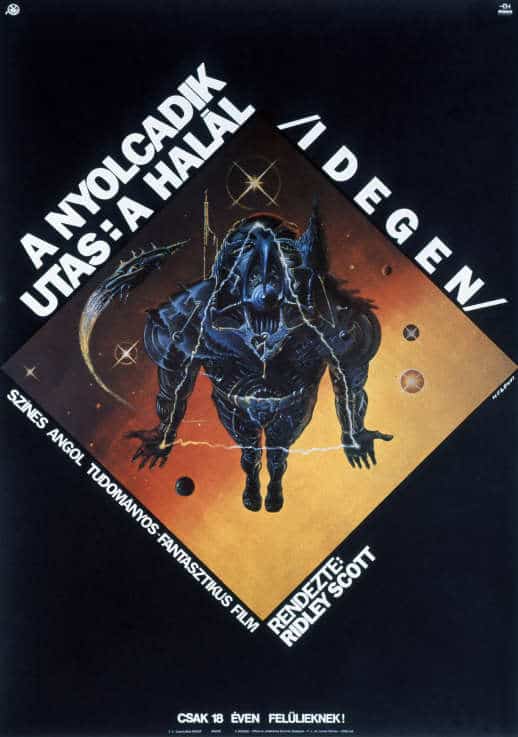
In the 1990s, Helényi designed numerous book covers, including for the Hungarian editions of Stephen King’s Cujo, Robin Cook’s Brain and Clive Barker‘s The Hellbound Heart. Helényi’s career involved creating designs for a variety of media, including book covers, magazines, and advertisements. His unique blend of modernist aesthetics and traditional techniques set him apart, earning him recognition and respect within Hungary’s creative community.
In 2002 he received the Munkácsy Mihály Prize for his work.
The Star Wars Connection
It was in the late 1970s that Helényi received a commission that would forever link his name to a cultural phenomenon. In 1979, he was tasked with creating a poster for the Hungarian release of the groundbreaking film Star Wars: Episode IV – A New Hope. Helényi’s approach was distinctively different from the more conventional posters associated with the film, which often focused on action-packed scenes and characters. Instead, he opted for a minimalist and symbolic approach.
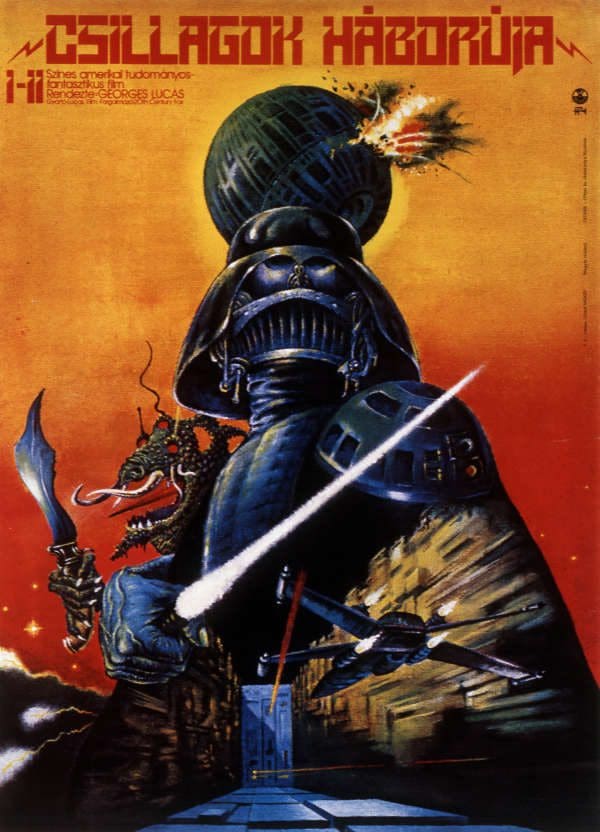
The simplicity of the design, along with its captivating use of colour and negative space, struck a chord with audiences. Helényi’s poster became an instant classic, embodying the epic nature of the Star Wars saga while also conveying a sense of mystery and intrigue. After the success of the poster for New Hope, he went on to create posters for the other movies in the first trilogy.
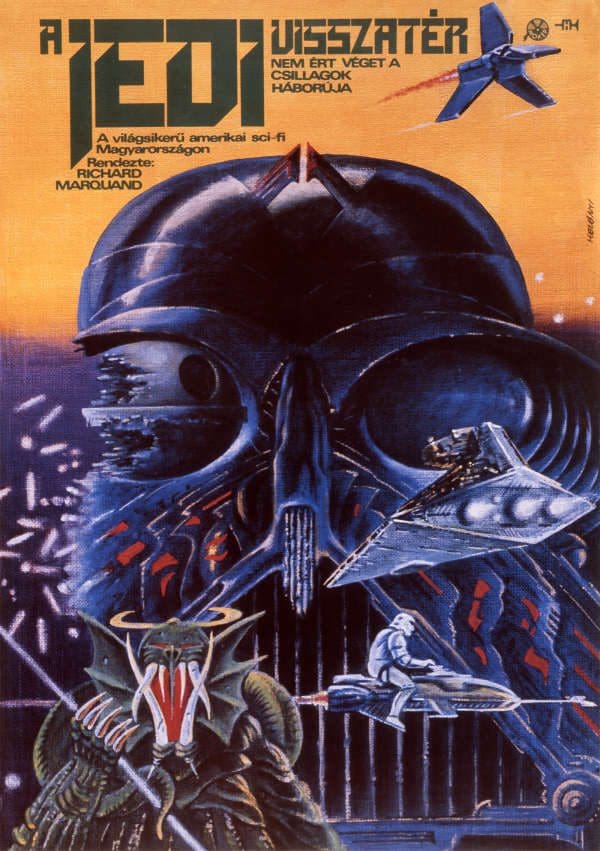
Diverse Portfolio: RoboCop and Beyond
Helényi’s success with the Star Wars poster opened doors to further collaborations within the film industry. One notable project was his work on the poster for the 1987 science fiction classic RoboCop. Helényi’s design skillfully captured the essence of the film’s futuristic and gritty themes, creating an image that resonated with both fans and newcomers to the franchise.
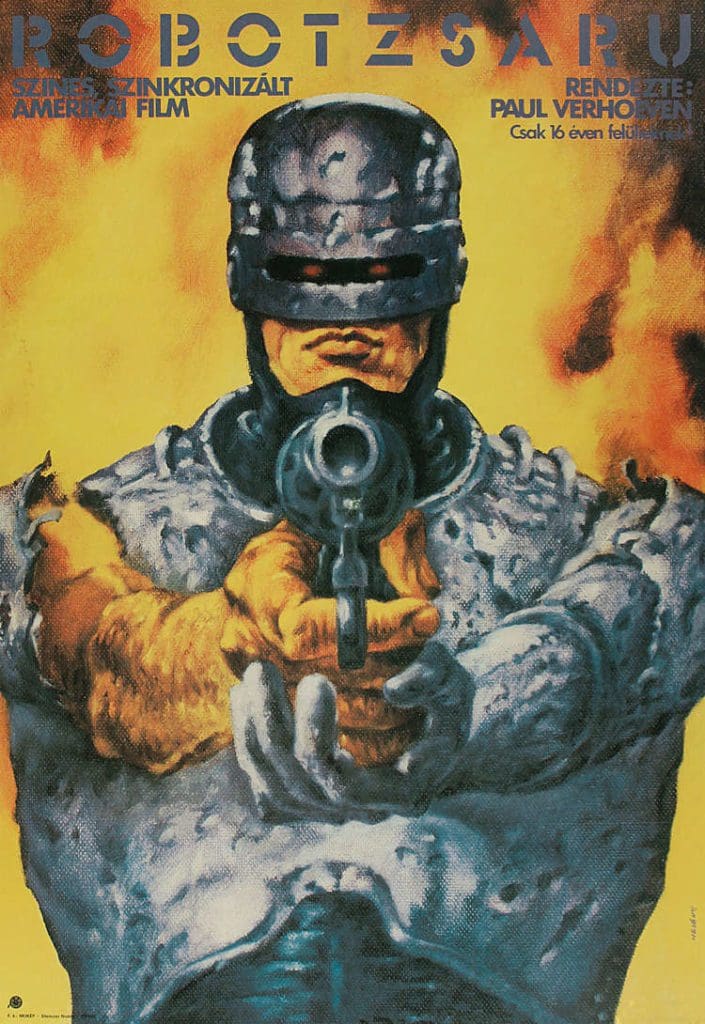
Beyond Star Wars and RoboCop, Helényi’s portfolio boasts a rich array of projects. He lent his artistic prowess to a variety of movie posters and album covers, consistently infusing his work with a unique blend of minimalism, depth, and emotion. His creations managed to convey complex narratives through elegantly simple visual elements, a testament to his exceptional talent.
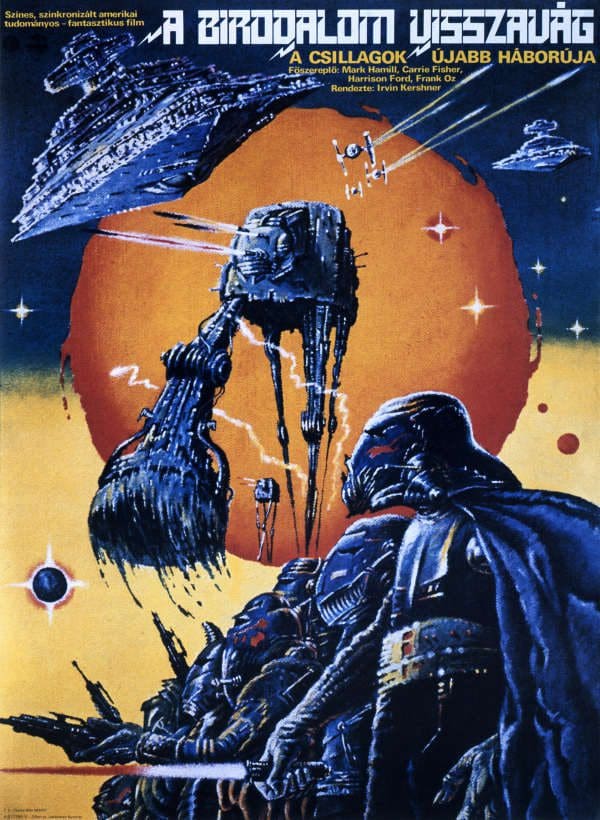
Legacy and Influence
Tibor Helényi’s legacy as a Hungarian artist extends far beyond the borders of his home country. His iconic Star Wars and RoboCop posters have become symbols of their respective franchises’ global impact, reflecting his ability to capture the essence of stories through visual simplicity.
Helényi’s artistic journey, marked by innovation and creativity, serves as an inspiration to aspiring artists and designers around the world. His ability to infuse his work with depth, meaning, and a touch of the extraordinary solidifies his place in both the history of cinema and the realm of graphic art.
His life’s work and entire portfolio is available online here for anyone who wants to immerse themselves in the fascinating Helényi universe.
Related articles:

